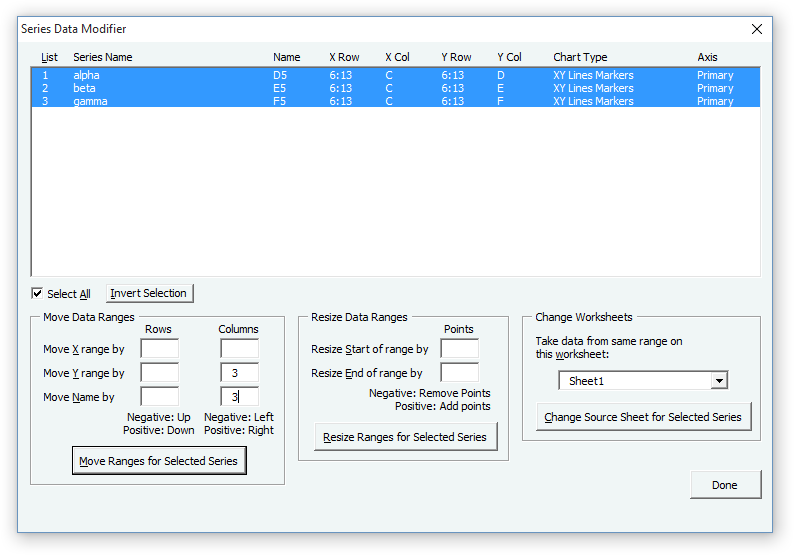

- #Peltier tech charts for excel 3.0 evaluation how to#
- #Peltier tech charts for excel 3.0 evaluation series#
Click on cell D4 and type in =IF(E4>0, E4,0).Copy the formula down to the end of the table.If you want all the values in a waterfall chart lie above zero, you need to enter the minus sign ( - ) before the second cell reference (E4) in the formula. The formula says that if the value in cell E4 is less or equal to zero, the negative number will be shown as positive and the positive number will be displayed as zero. Select cell C4 in the Fall column and enter the following formula there: =IF(E4The best way to complete the table is entering special formulas in the first cells in the corresponding columns and then copy them down to the adjacent cells using the fill handle. Now move to the next step and fill in these columns with the necessary values.

I've also added the End row at the bottom of the Month list to calculate the sales amount for the whole year. All the negative numbers from the Sales Flow column will be placed in the Fall column and all the positive numbers will be in the Rise column.
#Peltier tech charts for excel 3.0 evaluation series#
The Base column will be a calculated amount that is used as a starting point for the Fall and Rise series in the chart. You start with inserting three additional columns in your Excel table. So the first thing you should do is carefully rearrange your data. But if you apply a Stacked Column chart template to these particular values now, you'll get nothing similar to a waterfall chart. If you look at the table below, you'll see that the sales grow during some months, and they fall during others as compared to the starting position.Įxcel bridge chart will be a perfect way to visualize the sales flow over twelve months. I'll take the sales amount as an example. Let's create a simple sample table with positive and negative values to understand the things better.
#Peltier tech charts for excel 3.0 evaluation how to#
How to build an Excel bridge chartĭon't waste your time on searching a waterfall chart type in Excel, you won't find it there. If you need to evaluate a company profit or product earnings, make an inventory or sales analysis or just show how the number of your Facebook friends changed during that year, a waterfall chart in Excel is just what you need. These charts are quite useful for analytical purposes. A bit further in this article you'll know a trick how to make the intermediate columns float.Ī waterfall chart is also known as an Excel bridge chart since the floating columns make a so-called bridge connecting the endpoints. As a rule, these columns are color-coded for distinguishing positive and negative values. The intermediate columns appear to float, and show positive or negative change from one period to another, ending up in the final total value. The first and the last columns in a typical waterfall chart represent total values. It is normally used to demonstrate how the starting position either increases or decreases through a series of changes. So let's start brushing up on your Excel skills! :)įirst let's see how a simple waterfall chart should look and when it can come in handy.Ī waterfall chart is actually a special type of Excel column chart. You will know the secret of creating a waterfall chart in Excel 2010 - 2016 and learn about different utilities that can do it for you in a minute. You will find out what a waterfall chart is and how helpful it can be.

In this article we will go above and beyond creating basic graphs and have a closer look at a special chart type - the Waterfall chart in Excel. Microsoft Excel has lots of predefined chart types, including column, line, pie, bar, radar, etc. Graphical representation of your data turns to be very helpful when you want to make a comparison or pinpoint a trend at a glance. If you use Excel quite often, you know firsthand about the benefits of charts.


 0 kommentar(er)
0 kommentar(er)
